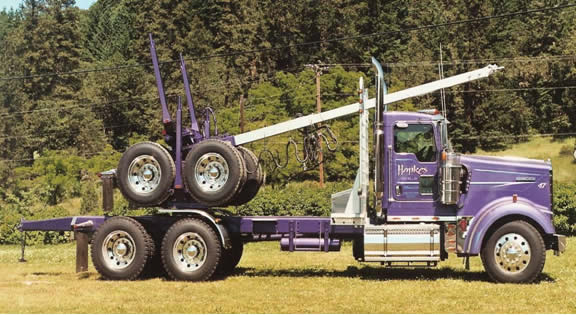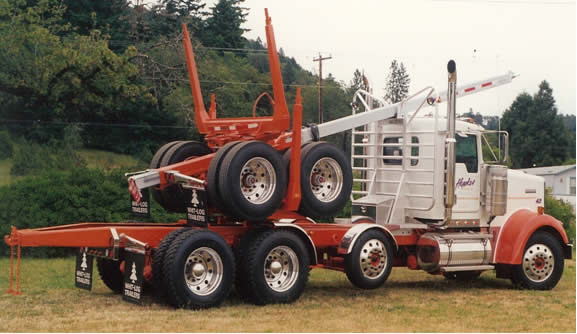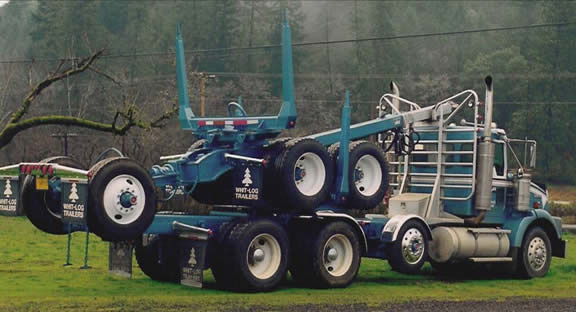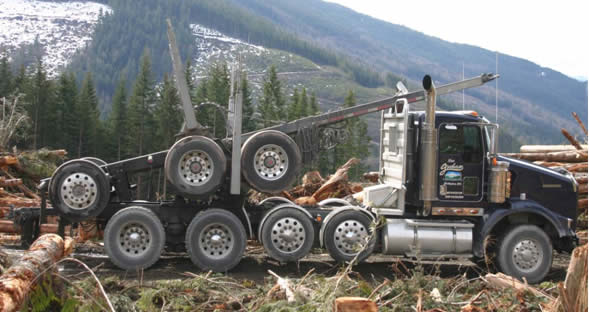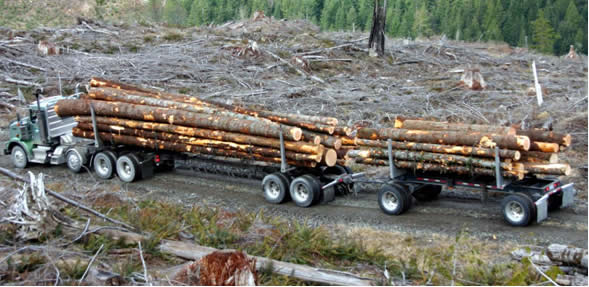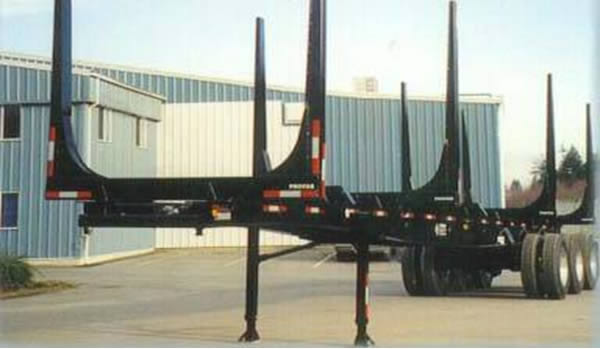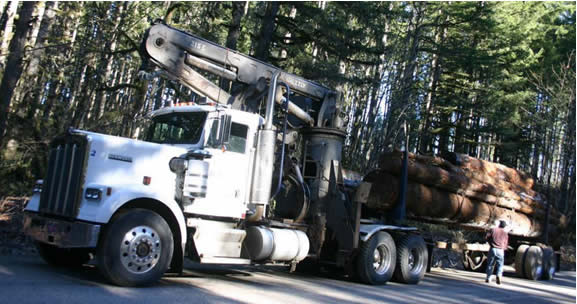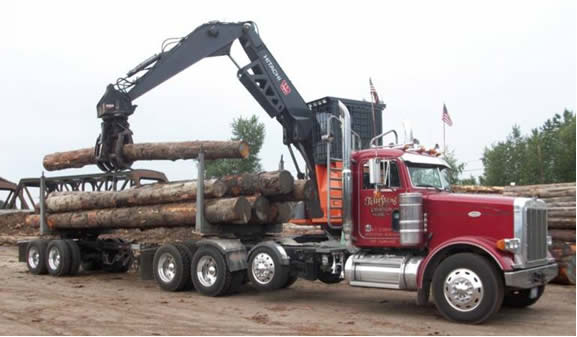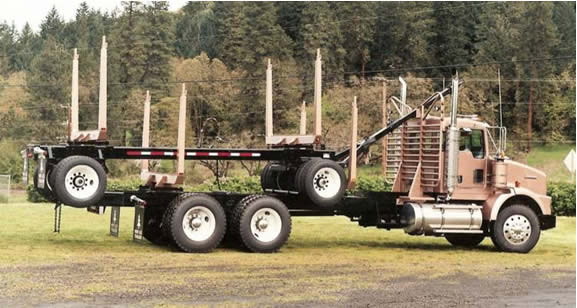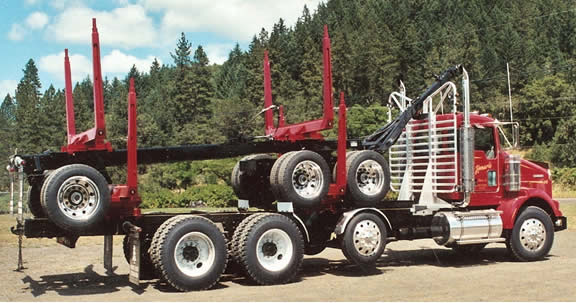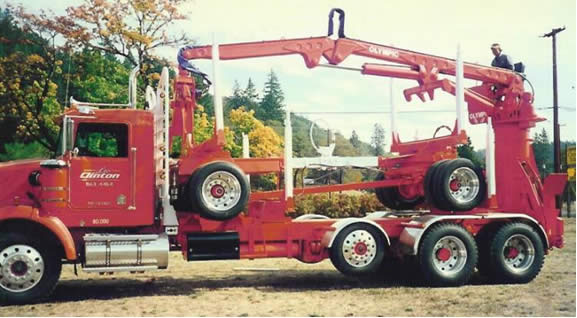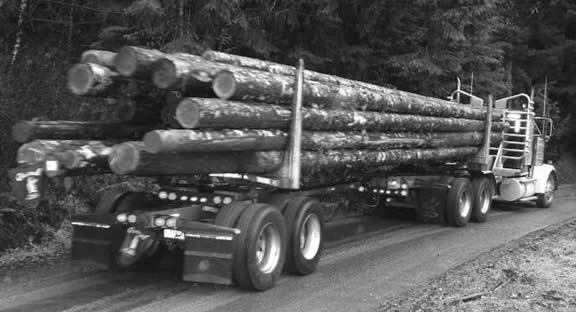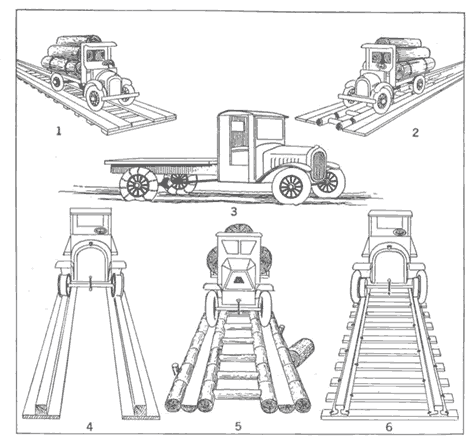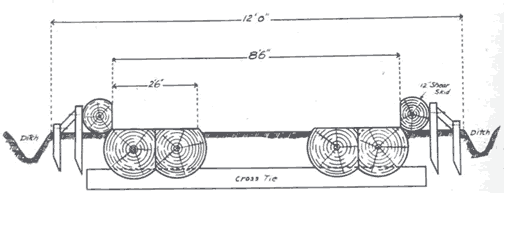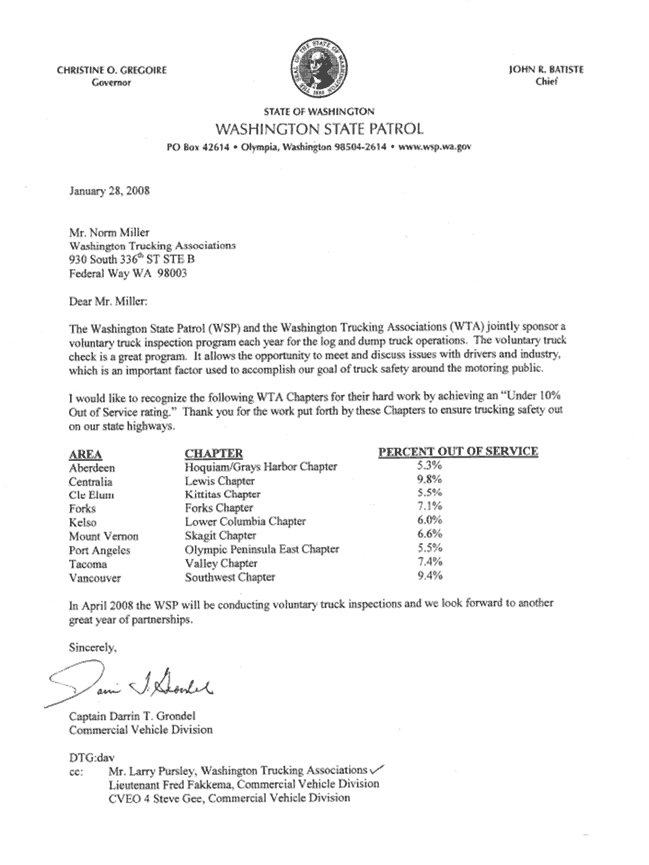
|
The Washington Log Trucking Industry:
Costs and Safety Analysis
Appendices
Appendix A: Log Truck Configurations
Appendix B: Log Truck Survey Questionnaire
Appendix C: Wooden Roads
Appendix D: Placement and Number of Wrappers
Appendix E: Log Road Classifications
Appendix F: Recognition of Voluntary Truck Inspection Program Success
Appendix A
Log Truck Configurations
|
1) 5-Axle Long Logger (Whit-Log Inc.). |
|
2) 6-Axle Long Logger (Whit-Log Inc.). |
Log Truck Configurations
|
3) 7-Axle Long Logger (Whit-Log Inc.) |
|
4) 8-Axle Long Logger (Log Trucker Magazine). |
Log Truck Configurations
|
5) 6-Axle Long Logger with “Pup” Trailer (Log Trucker Magazine). |
|
6) Hay Rack Trailer (ProFab). |
Log Truck Configurations
|
7) 5-Axle Self-Loading Log Truck (Log Trucker Magazine). |
|
8) 6-Axle Self-Logging Log Truck (Log Trucker Magazine). |
Log Truck Configurations
|
9) 5-Axle Mule Train (Whit-Log Inc.). |
|
10) 7-Axle Mule Train (Whit-Log Inc.). |
Log Truck Configurations
|
11) 6-Axle Self-Loading Mule Train (Whit-Log Inc.). |
|
12) Tractor and Pole Trailer (Log Trucker Magazine). |
Appendix B
Log Truck Survey Questionnaire (a PDF file)
Appendix C
Wooden Roads
|
Wooden road types employed by loggers in the early twentieth century (Brown 1936). |
|
Cross section of pole road construction (Knapp 1921). |
Appendix D
PLACEMENT AND NUMBER OF WRAPPERS
WAC 296-54-58950 Log trucks--Wrappers and Binders
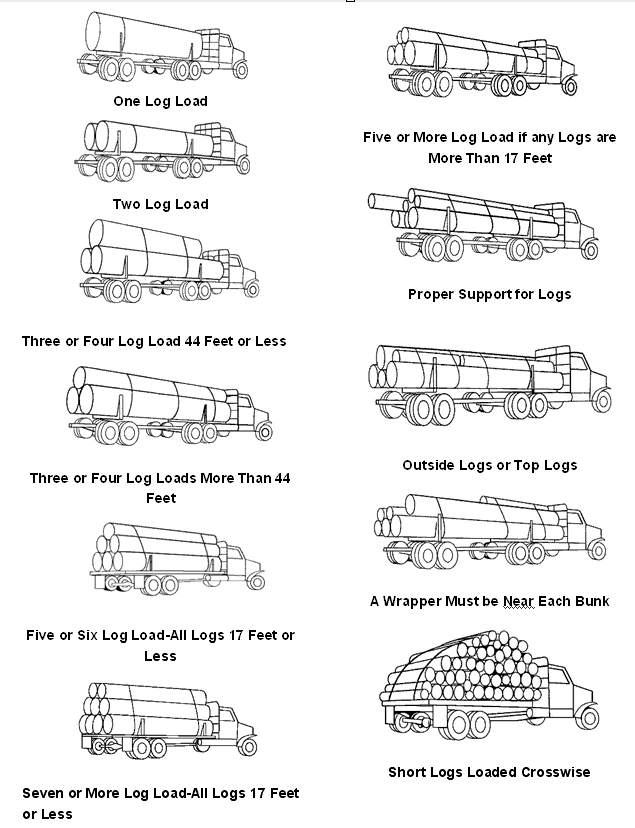
Appendix E
Log Road Classifications
Washington Utilities and Transportation Commission
Tariff No. 4-A; Log Road Classification System
April 26, 1994
-
Class A:
Paved or macadamized, reasonably free from chuck holes, ruts, washboard conditions and other hazards, not exceeding grades of 6 percent.
-
Class B:
Paved or macadamized, or graveled, other than the specifications in Class A as applicable, not exceeding grades of 12 percent.
Permanently and continuously maintained with fine gravel, smooth surface, free from chuck holes, ruts, washboard conditions and other hazards, with grades exceeding 6 percent but not exceeding 12 percent.
Good plank not exceeding grades of 12 percent. “Good plank road” shall be defined as at least 10 feet wide with side guards at least 6 inches high on cross planking or center guard at least 6 inches high on longitudinal planking. It must be constructed of planks at least 3 inches by 10 inches, firmly spiked down and with sufficient turn out space for truck passing at least every 200 yards. Supporting timbers must be at least 10 inches by 10 inches.
-
Class C:
All roads with grades exceeding 12 percent but not exceeding 18 percent.
All dirt, rock, or plank other than good plank specified under Class B, not exceeding grades of 18 percent.
-
Class D:
All roads with grades exceeding 18 percent but not exceeding 22 percent.
-
Class E:
All roads with grades exceeding 22 percent.
Roads consisting of mud or water to a depth of 8 or more inches, or any road that cannot be negotiated by the truck under its own motive power.

Appendix F:
Recognition of Voluntary Truck Inspection Program Success
|
Washington State Patrol recognition of Voluntary Truck Inspection Program success |
|
|
|
The Rural Technology Home Page is provided by the College of Forest
Resources. For more information, please contact the Rural
Technology Initiative, University of Washington Box 352100 Seattle,
WA 98195, (206) 543-0827. © 2000-2004, University of Washington, Rural
Technology Initiative, including all photographs and images unless otherwise
noted. To view the www.ruraltech.org privacy policy, click
here.
|







